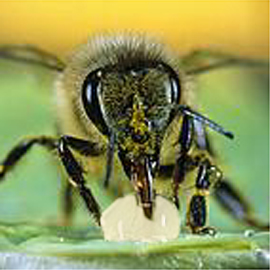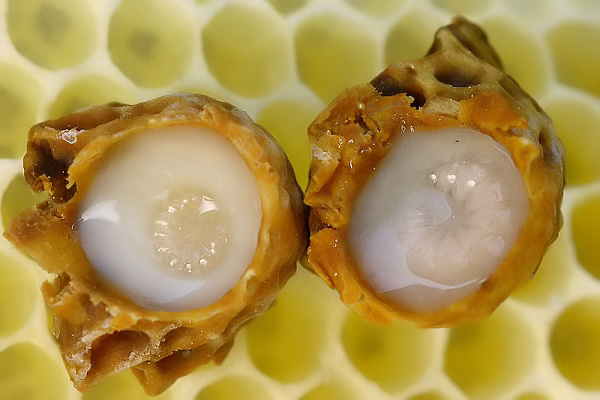Known as the “elixir of youth”, royal jelly is highly appreciated both in natural medicine and cosmetics industry, its value being provided by the complex and varied chemical composition.
Royal jelly is a substance secreted by glands of bees and is intended for feeding young larvae and adult royal bees. It is used once it is secreted and is never stored, like other products of the hive.
The composition of royal jelly
The product is viscous-looking, creamy white color and taste sour, royal jelly has essential component elements such as: acetilconila (with a role in transmission of nervous impulse), substances with antibiotic and antibacterial, lipids, among which may be mentioned unsaturated fatty superiors, in particular Omega3, phospholipids, and growth hormone with enzymes and micronutrients such as K, Ca, Na, Zn, Fe, Cu, Mn – with a clear predominance of potassium.
A little known fact is that royal jelly is rich in vitamin B complex – namely B1, B2, B3, B5, B6, B8, B12.
Pantothenic acid (vitamin B5) and coenzyme A is converted in the body, acting beneficial to the nervous system and adrenal glands, hence the name “anti-stress vitamin.” Also participating in the formation and regeneration of skin and mucous membranes and in lipid metabolism. Royal jelly is the natural product known as the richest in vitamin B5.
Royal jelly is the only natural product containing the substance 10 HDA acid, which turns royal jelly into a super food.
The composition of royal jelly and amino acids are substances essential in protein synthesis, which is the cornerstone of muscle mass.
Eight of these amino acids have been identified as essential because they can not be synthesized in the human body and be taken daily in food.
Therapeutic effects of royal jelly:
– Resistance to effort (exams, sports competitions);
– Refreshing mentally, sexually and intellectually;
– Restoring the body after surgery and aggressive treatment;
– Menopause and anemia;
– Restores nerve cells;
– Reduces blood cholesterol;
– Contribute to cellular metabolism.
Royal jelly – method of administration
Maintenance dose of royal jelly is 0.5 – 1 g per day (1-2 teaspoons) in adults and 0.5 g per day (one teaspoon) in children, sublingual (melt under tongue), 30 minutes before first meal in the day.
Optionally, royal jelly can be mixed with honey, without altering its therapeutic properties. Mix 10g of royal jelly with 500 g of honey until becomes smooth, and consume 1-2 tablespoons per day. Royal jelly is recommended in courses of at least 6 weeks in spring and autumn.
Thanks to its regenerating and toning properties, royal jelly is used in the composition of creams, lotions, masks that addresses premature wrinkled skins or skins rough, skin lacking flexibility.

